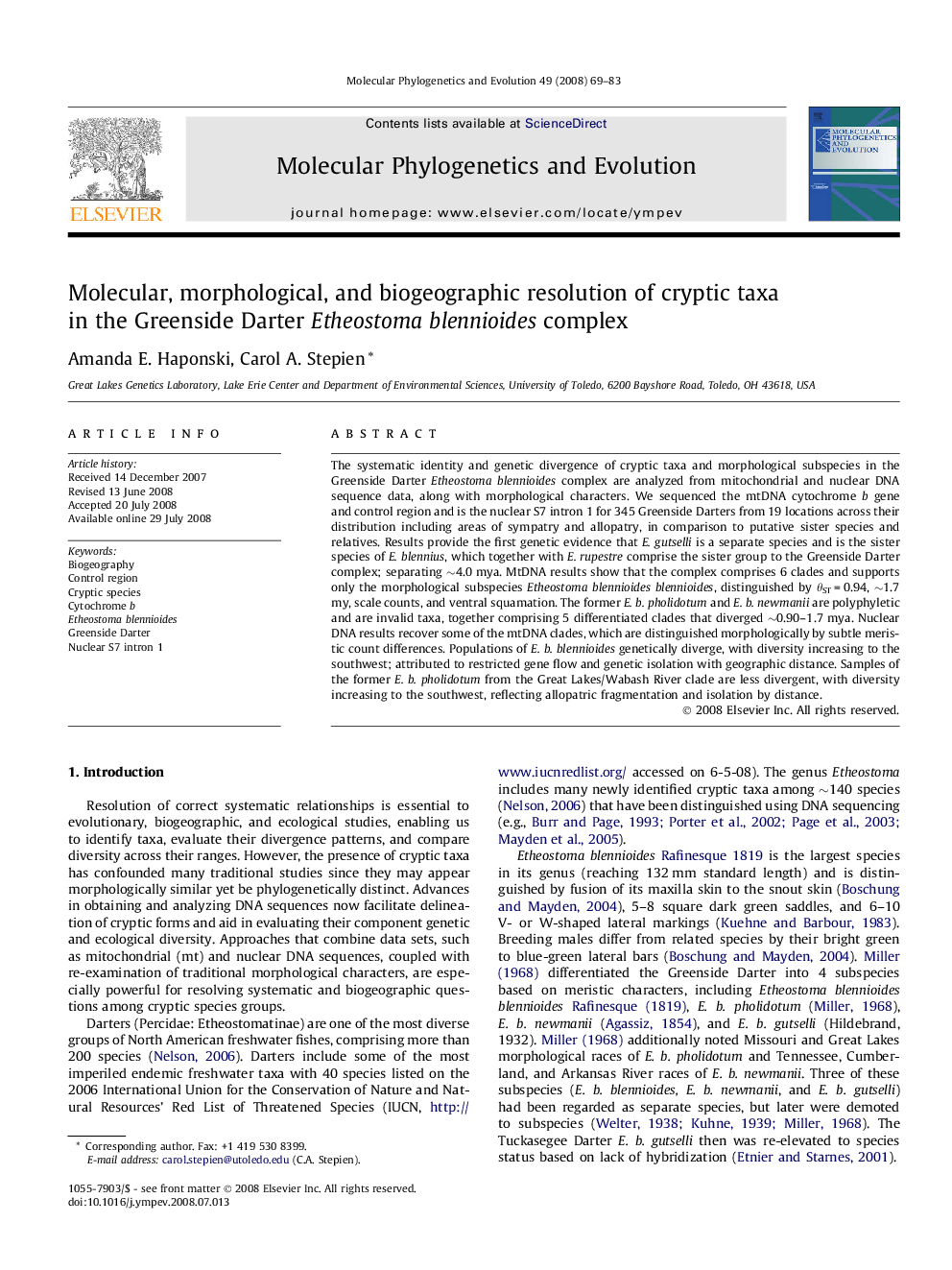| Article ID | Journal | Published Year | Pages | File Type |
|---|---|---|---|---|
| 2835030 | Molecular Phylogenetics and Evolution | 2008 | 15 Pages |
The systematic identity and genetic divergence of cryptic taxa and morphological subspecies in the Greenside Darter Etheostoma blennioides complex are analyzed from mitochondrial and nuclear DNA sequence data, along with morphological characters. We sequenced the mtDNA cytochrome b gene and control region and is the nuclear S7 intron 1 for 345 Greenside Darters from 19 locations across their distribution including areas of sympatry and allopatry, in comparison to putative sister species and relatives. Results provide the first genetic evidence that E. gutselli is a separate species and is the sister species of E. blennius, which together with E. rupestre comprise the sister group to the Greenside Darter complex; separating ∼4.0 mya. MtDNA results show that the complex comprises 6 clades and supports only the morphological subspecies Etheostoma blennioides blennioides, distinguished by θST = 0.94, ∼1.7 my, scale counts, and ventral squamation. The former E. b. pholidotum and E. b. newmanii are polyphyletic and are invalid taxa, together comprising 5 differentiated clades that diverged ∼0.90–1.7 mya. Nuclear DNA results recover some of the mtDNA clades, which are distinguished morphologically by subtle meristic count differences. Populations of E. b. blennioides genetically diverge, with diversity increasing to the southwest; attributed to restricted gene flow and genetic isolation with geographic distance. Samples of the former E. b. pholidotum from the Great Lakes/Wabash River clade are less divergent, with diversity increasing to the southwest, reflecting allopatric fragmentation and isolation by distance.
